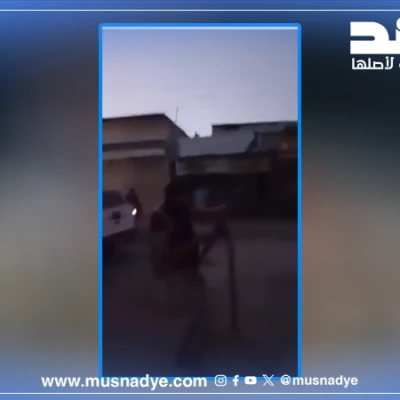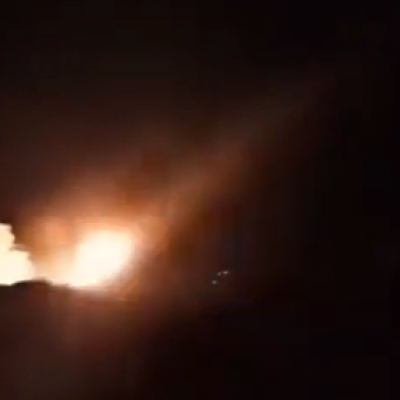The truth of Abi Ahmed’s statements about the Renaissance Dam

Refute
Abi Ahmed’s statement is inaccurate, because according to what Ethiopia has announced, the Grand Ethiopian Renaissance Dam will hold 74 billion cubic meters of water if it works at full capacity. This amount is equivalent to the shares of Egypt (55 billion cubic meters) and Sudan (18.5 billion cubic meters) together.
– In 2019, Mohamed Abdel-Aty, Minister of Irrigation and Water Resources, said that the Renaissance Dam may reduce Egypt’s share of water by 2%. And this month, the minister said that the shortage of one billion cubic meters of water is causing 200 thousand families to lose their main source of livelihood in agriculture, which means that one million citizens of these families will be affected.
According to the Egyptian Information Service, in the event of the completion of the Renaissance Dam and the start of storage years, this will lead to a decrease in Egypt’s share of water by 9 to 12 billion cubic meters annually, and in the event that Ethiopia decides to build a group of integrated dams (four dams), the This will lead to an increase in the percentage of the shortage in Egypt’s share of water to 15 billion cubic meters annually, in addition to Egypt’s loss of about 3 million acres of agricultural land and the displacement of (5 to 6 million) farmers.
So far, Ethiopia does not want to agree on a specific and binding water quota for the downstream countries (Egypt and Sudan), which negates the hypothesis that the dam will take a small part of the flow, especially since the Ethiopian offer made by Addis Ababa in the negotiations was to reduce Egypt’s share of the Blue Nile to 35 billion cubic meters annually instead of the 43 billion cubic meters it has been arriving since the 1959 agreement was signed.
## In Sudan, Roseires will be more resilient and will not be subject to extreme fluctuations in the flow
Correction:
Sudan will be greatly affected by the Renaissance Dam if the filling is completed without an agreement, as the dam is considered “a direct threat to the Roseires reservoir, and it will threaten the lives of half of the population of central Sudan, as well as affecting agriculture, electricity generation and drinking water plants,” according to the Sudanese Minister of Irrigation, Dr. Yasser Abbas.
Sudan believes that filling the dam without an agreement is a “threat to its national security,” because “it is impossible to operate the Roseires dam without an agreement that obliges Ethiopia to provide information on the quantities of water flowing from the Renaissance Dam,” according to data from the Ministry of Irrigation and the Ministry of Irrigation and Water Resources – Sudan – Sudan
– According to statements by the director of the Roseires Dam reservoir, Engineer Hamid Mohamed Ali, last week to Al-Shorouk newspaper, Ethiopia’s failure to inform Sudan of the date of the first filling, June 2020, and the completion of the filling process without an agreement had huge negative effects on the operating system of the Roseires dam.
– According to “Hamid”, the Blue Nile, which used to reach Sudan from the Ethiopian plateau, was cut off for about 7 days (the first filling period), which negatively affected the programs of operating the Roseires dam, and consequently it affected all other dams in Sudan that depend on the operation of the Roseires reservoir mainly as Sennar, Marwa, and Jabal Awlia, in addition to the impact of the capital, Khartoum.
– According to the statement of the Ethiopian Ministry of Irrigation, April 2021, Sudan was affected by the experience of the first filling of the Renaissance Dam, which was carried out last year, and caused “severe damage to Sudan, represented in the scarcity of irrigation and drinking water, even in the capital, Khartoum.”
Sudan was affected when Ethiopia withheld 3.5 billion cubic meters of water in just one week without notifying Sudan in advance, and it is expected that the damage will increase in the second phase of filling that Ethiopia announced to start this month.
– In July of last year, after Addis Ababa started the process of the first filling of the dam, the Khartoum State Water Authority announced that a number of Nile drinking stations were out of service due to the sudden decline of the White and Blue Niles and the Nile River.
– As the Sudanese Ministry of Irrigation and Water Resources announced at the time, the water level at the El-Dim station on the border with Ethiopia has decreased to about 90 million cubic meters per day, which means Ethiopia has closed the gates of the Renaissance Dam.
According to experts, when the Renaissance Dam is completed, Sudan will be deprived of a large water quota annually, which will lead to the drought of millions of acres, a decrease in agricultural output, and a series of huge economic losses for Sudan as a result.
#wonderfull










